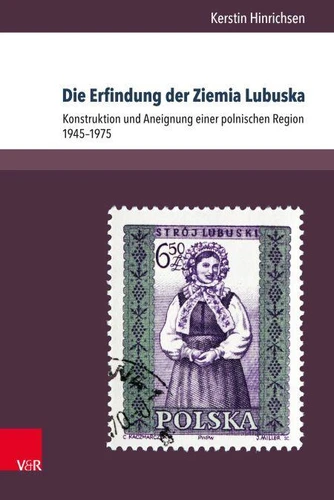Die Erfindung der Ziemia Lubuska. Konstruktion und Aneignung einer polnischen Region 1945–1975
Par :Formats :
Disponible dans votre compte client Decitre ou Furet du Nord dès validation de votre commande. Le format PDF est :
- Compatible avec une lecture sur My Vivlio (smartphone, tablette, ordinateur)
- Compatible avec une lecture sur liseuses Vivlio
- Pour les liseuses autres que Vivlio, vous devez utiliser le logiciel Adobe Digital Edition. Non compatible avec la lecture sur les liseuses Kindle, Remarkable et Sony
 , qui est-ce ?
, qui est-ce ?Notre partenaire de plateforme de lecture numérique où vous retrouverez l'ensemble de vos ebooks gratuitement
Pour en savoir plus sur nos ebooks, consultez notre aide en ligne ici
- Nombre de pages354
- FormatPDF
- ISBN978-3-8470-0654-1
- EAN9783847006541
- Date de parution13/03/2017
- Protection num.pas de protection
- Taille6 Mo
- Infos supplémentairespdf
- ÉditeurV&R Unipress
Résumé
After the Second World War, the German region of East Brandenburg became the Polish region of Ziemia Lubuska. In her study, Kerstin Hinrichsen examines how this region was politically constructed after 1945 and turned into a part of Poland over the course of the ensuing decades. She analyses the changing territorial markings, the genesis and shifts in meaning of the term "Ziemia Lubuska" whilst exploring the laboriously established regional institutions.
The region's construction embodies a process of regional formation not yet completed to date and one that exemplarily reflects the various phases of post-war regionalism in Poland.
The region's construction embodies a process of regional formation not yet completed to date and one that exemplarily reflects the various phases of post-war regionalism in Poland.
After the Second World War, the German region of East Brandenburg became the Polish region of Ziemia Lubuska. In her study, Kerstin Hinrichsen examines how this region was politically constructed after 1945 and turned into a part of Poland over the course of the ensuing decades. She analyses the changing territorial markings, the genesis and shifts in meaning of the term "Ziemia Lubuska" whilst exploring the laboriously established regional institutions.
The region's construction embodies a process of regional formation not yet completed to date and one that exemplarily reflects the various phases of post-war regionalism in Poland.
The region's construction embodies a process of regional formation not yet completed to date and one that exemplarily reflects the various phases of post-war regionalism in Poland.



